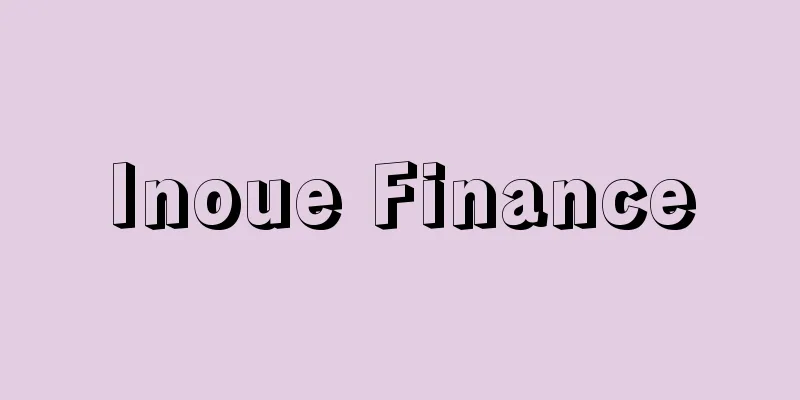Inoue Finance

|
Inoue Junnosuke, Minister of Finance of the Minseito Cabinet (the Hamaguchi Osachi and Wakatsuki Reijiro Cabinets) from July 1929 to December 1931, implemented an austerity budget centered on lifting the ban on gold exports. As Minister of Finance of the Hamaguchi Cabinet, whose ten major political platforms included lifting the gold ban, fiscal austerity, and industrial rationalization along with cooperative diplomacy, Inoue immediately began preparations such as fiscal austerity, recovery of the exchange rate, and accumulation of specie. He also set up a credit of 100 million yen for the British and American banks, and announced in November 1929 that he would lift the gold ban at the old parity from January 11, 1930. Inoue's plan was to stabilize the currency value and exchange rate through lifting the gold ban and fiscal austerity, while at the same time promoting industrial rationalization to lower domestic prices and restore equilibrium in the balance of payments by expanding exports. However, the recession caused by the lifting of the ban, combined with the spread of the Great Depression that began in the United States the previous year, led to a serious depression in the Japanese economy from March 1930 (the Showa Depression), with the trade balance worsening more than expected and a large amount of specie flowing out. Moreover, in the fall of 1931, Great Britain, the center of the international gold standard, suspended the gold standard, which led to an intensification of dollar buying in anticipation of a re-ban on Japan's gold exports. Inoue countered this by selling dollars and raising the official discount rate, but the cabinet resigned en masse on December 11, 1931, putting an end to Inoue's fiscal policy. [Kaichiro Oishi] "Takahashi Kamekichi, 'Taisho Showa Financial History Volumes 2 and 3' (1955, Toyo Keizai Shinposha)" ▽ "Miyamoto Kenichi, 'Showa Depression and Financial Policy' (Kawai Ichiro et al., eds., 'Lecture Series on the Development History of Japanese Capitalism, Volume 3', 1968, Nippon Hyoronsha)" ▽ "Osamu Nagao, 'Showa Depression' (Iwanami Shinsho)" Source: Shogakukan Encyclopedia Nipponica About Encyclopedia Nipponica Information | Legend |
|
1929年(昭和4)7月から1931年12月までの民政党内閣(浜口雄幸(おさち)・若槻(わかつき)礼次郎両内閣)の蔵相井上準之助が実行した金輸出解禁を軸とする緊縮財政。協調外交とともに金解禁、財政緊縮、産業合理化等を十大政綱とした浜口内閣の蔵相となった井上は、直ちに財政の緊縮、為替相場の回復、正貨の蓄積などの準備を進め、さらに英米銀行団に1億円のクレジットを設定したうえで、1929年11月に予告して翌1930年1月11日より旧平価での金解禁を実施した。井上の構想は、金解禁と緊縮財政によって通貨価値と為替相場の安定を図り、同時に産業合理化を進めて国内物価水準を引き下げ、輸出を伸長して国際収支の均衡を回復することにあった。しかし、解禁による不況と前年アメリカに端を発した世界恐慌の波及が重なり、1930年3月以降日本経済は深刻な恐慌に陥り(昭和恐慌)、予想以上に貿易収支が悪化して多額の正貨が流出した。しかも1931年秋には国際金本位制の中心であるイギリスが金本位制を停止したため、日本の金輸出再禁止を見越したドル買いが激しくなり、井上はこれにドル売りと公定歩合引上げで対抗したが、1931年12月11日内閣が総辞職したため、井上財政は終止符を打った。 [大石嘉一郎] 『高橋亀吉著『大正昭和財界変動史 中・下』(1955・東洋経済新報社)』▽『宮本憲一著「昭和恐慌と財政政策」(川合一郎ほか編『講座日本資本主義発達史論 Ⅲ』1968・日本評論社)』▽『長幸男著『昭和恐慌』(岩波新書)』 出典 小学館 日本大百科全書(ニッポニカ)日本大百科全書(ニッポニカ)について 情報 | 凡例 |
Recommend
Living Stone
…It is distributed in South Africa and Namibia. I...
Saprolegnia ferax (English spelling) Saprolegniaferax
…[Tsubaki Keisuke]. . . *Some of the terminology ...
Yin Yang and the Five Elements
The ancient Chinese world view explains the correl...
Tenancy at will
…Originally, it included not only the provision t...
Jeffrey, Francis
Born: October 23, 1773, Edinburgh [Died] January 2...
De l'amour (English spelling)
…After a long stay in his second home of Italy, m...
The Indian Councils Act
…The first, in 1858, deals with the transfer to t...
Tosa dog
A breed of dog. Also known as the Tosa fighting do...
Microscopium (Microscope)
Its abbreviation is Mic. It is a small constellati...
Augusta Praetoria - Augusta Praetoria
...The capital of the Aosta Valley in northwest I...
Soil disinfection - Dojoshodoku
Disinfection is a method used to eradicate pathoge...
Karasuma - Ugan
An Altaic-speaking nomadic people who lived in th...
Anshoji Temple
A temple of the Koyasan Shingon sect in Hirabayas...
Winning fee - Shosairyo
This is a customs duty on the cargo carried by a s...
Nefertem
…Ancient Egyptian lion-like goddess. Consort of P...




![Takanosu [Hot Spring] - Takanosu](/upload/images/67cc1db1d7fb4.webp)




